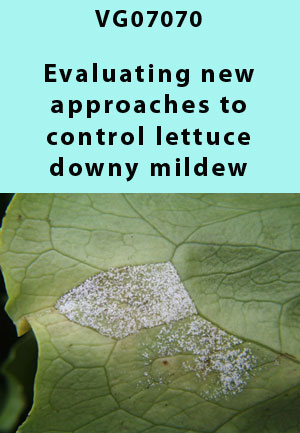|
|
Downy mildew is a devastating fungal disease of lettuce, especially in autumn and spring crops. Disease resistant varieties are an important management tool for downy mildew. But the fungus usually overcomes this resistance so new resistant varieties must continually be breed. There is also a high risk of the fungus developing resistance to the most popular systemic fungicides. Fungicides should be used only when necessary, to avoid selecting fungicide resistant strains. The project aims to combine a number of disease predictive models for downy mildew of lettuce that were developed overseas. These models use microclimate data, collected by a weather station located in a crop, to identify high disease risk conditions. The crop can then be treated only when necessary. If conditions do not favour the disease, spraying will not be necessary and with fewer fungicide sprays are needed.
Progress report : The downy mildew model has two parts :
We need to be confident that the British model will accurately predict downy mildew under Australian conditions. To test the model we placed spore traps in lettuce crops to track when spores are produced. Infection of the crop was tracked by placing lettuce seedlings amongst the crop plants for a 24 hour period at regular intervals throughout the life of the crop. Seedlings are good indicators of infection events because they are very susceptible to mildew. The spore release and infection data was checked against the models predictions of disease. So far, the model has not been accurate enough to predict all sporulation and infection events in the crops. The model has not consistently predicted the disease that developed on the indicator lettuce plants and needs to be adjusted and further tested to improve its accuracy. Ultimately, the model will be an integral part of an IPM program for lettuce. The model will be further developed and checked for accuracy using spore trapping and trap plants. The modified model will be tested over several seasons on cos, fancy and iceberg lettuce. The economics of controlling the disease using the model will be compared against the weekly spray program and soft pesticide options. Acknowledgments : The authors wish to thank Boomaroo nurseries for providing the lettuce seedlings used in this trial. This project was formed by Government agencies, private industry, universities and international researchers, to benchmark disease predictive models for major vegetable crops. Funding was provided by Australian vegetable growers (through the R & D levy) and the Department of Primary Industries, Victoria. The Australian Government provides matched funding for all HAL’s R&D activities. |
||||
|

